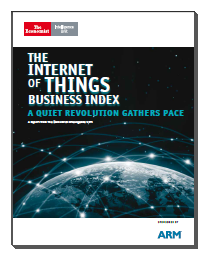System Integrators Defend Their IIoT Readiness
A clear sign of a growing opportunity is when people start staking their claims. Here’s a case in point. A recent blog in AutomationWorld has caught the attention of system integrators, and from their comments it seems to have rubbed some of them the wrong way. The blog, The IIoT Integrators Are Coming, by Senior Editor Stephanie Neil, claims that automation system integrators may lose out on IIoT opportunities if they don’t keep up with the technology, leaving the space open for non-industrial IoT companies from the IT world.
Several control system integrators, members of Control System Integrators Association (CSIA), have responded saying that Neil and the people she quotes are mistaken. They explain the differences between consumer or business IoT and Industrial IoT, and point out that it is easier for a company that knows industrial automation to add IoT to their portfolio than for an IoT company to learn industrial process control. For example, in counter-blog We Are Ready for IIoT, Jeff Miller of Avid Solutions makes the case that his company, at least, is ready.
If nothing else, this conversation provides a useful window into what these potentially key players in the Industrial IoT space are thinking. On the one hand, some realize that IIoT can be a valuable service to offer their customers, and are gearing up for it. Others are holding back, questioning the value, reluctant to test the waters, and wondering whether this isn’t just mainly hype that will evaporate in a year or two. But, according to Neil, if they wait too long, someone else will swoop in and steal their lunch. And that person or company may be completely outside the traditional world of industrial system integration.
Who is right?
Our take on this is simple. Both are right. First, anyone from the IT realm working in IoT needs to know that there is a real difference between regular IoT and Industrial IoT. An industrial user of the IoT will have special requirements, different and in many cases far beyond what someone might need for a general business or consumer application. At the same time, system integrators must understand that the knowledge required for building an IoT application is highly specialized. It takes a deep understanding of TCP and working with unstructured data, in addition to the critical issue of Internet security. Above all, we encourage system integrators to keep an open mind, and treat the IIoT as a new opportunity to better serve their customers.
As to the best approach to take, we see at least two: do it yourself, or partner with someone who provides good tools. We won’t stand in the way of the DIY’ers in the crowd, but for those who value tools, we have an easy and cost-effective way to implement the Industrial IoT that works. It does not require integrators to learn new protocols or build security models. It simply connects to in-plant systems and provides the remote data access that automation engineers expect: secure, bi-directional, and real-time, with no open firewalls, no VPNs, and no programming. And it has a revenue-share model for system integration companies that want to enjoy the financial benefits of the IIoT.



